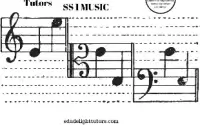Geometry- Plane Shapes: (a) Types of plane shapes and their properties
Subject : MATHEMATICS
Class : JSS1
Term :THIRD TERM
Week : WEEK THREE
Reference Materials
- Scheme of Work
- Online Information
- Textbooks
- Workbooks
- 9 Year Basic Education Curriculum
Previous Knowledge :
The pupils have previous knowledge of
Behavioural Objectives : At the end of the lesson, the pupils should be able to
- define Plane shapes
- mention examples of plane shapes
- say the properties of plane shapes that are mentioned above
Content :
WEEK THREE
Geometry- Plane Shapes
Plane shapes are two-dimensional shapes bounded by lines known as sides. Any shape drawn on a plane is called a two-dimensional shape (or 2-D shapes for short). When we say a figure is two- dimensional, we mean it can be measured along x and y axes i.e. it has length and width or breadth.
Types of Plane Shapes
Common plane shapes are:
- Triangles
- Quadrilaterals
- Polygons
- Circles
Triangles and quadrilaterals are examples of polygon. However, because triangles and quadrilaterals have their own special properties they are usually dealt with separately.
Triangles
Tri-angle means three angles. A triangle has three angles and three sides.
Types of Triangles
- Scalene triangle: it has no sides and no angles equal. i.e. it has three sides of different lengths and three angles of different magnitudes (sizes).
z
x y
- Isosceles triangle: It has two adjacent sides equal and two angles equal
b
aa
- Equilateral triangle: It has all its sides equal and all its angles equal. Each angle is 600.
x
x x
Other types of triangles are:
- Acute-angled triangle: It has each of its angles less than 900 i.e. each angle is acute
- Obtuse-angled triangle: It has one of its angles more than 900.
- Right-angled triangle has one of its angles equal to 900. The side opposite the right angle is the longest side and is often called the hypotenuse.
Quadrilaterals
A quadrilateral is a four-sided plane shape with four angles
Types of quadrilateral
Properties
- It has all its sides equal
- Each angle is 900
- The opposite sides are parallel
- Rectangle
Properties
It is a quadrilateral that has opposite sides equal and each angle is 900.
900
- Parallelogram
It has two opposite sides parallel and equal in length
- Rhombus
Properties
- It has all its four sides equal in length
- Opposite sides are parallel
- Opposite angles are equal
- Trapezium
A trapezium is a quadrilateral with one pair of opposite sides parallel
Note: when the two non-parallel sides are equal in length, it is called an isosceles trapezium
- Kite
A kite is a quadrilateral that has two pairs of adjacent sides equal in length and one pair of opposite angles equal.
Evaluation:
- What is a plane shape?
- With the aid of diagram, describe scalene, isosceles and equilateral triangles.
- Write down all the quadrilaterals that have
- two pairs of parallel sides
- four sides equal
- two adjacent sides equal and one pair of opposite angles equal
Polygon
A polygon is any closed shape that has three or more straight sides. Thus, rectangles, squares and triangles are all examples of polygons.
The table below shows some special polygons and their sides.
| Names of Polygons | Number of sides | |
| Triangle | 3 | |
| Quadrilateral | 4 | |
| Pentagon | 5 | |
| Hexagon | 6 | |
| Heptagon | 7 | |
| Octagon | 8 | |
| Nonagon | 9 | |
| Decagon | 10 | |
| Duo decagon | 12 |
[the_ad id=”40090″]
There are two types of polygons. They are:
- Regular Polygons
- Irregular Polygons
- Irregular Polygons
When the sides of a polygon and the included angles are not equal it is called an irregular polygon. Examples are irregular pentagon and irregular hexagon shown below.
Irregular Pentagon
Irregular Hexagon
- Regular Polygon
A polygon that has all its sides and angles equal is called a regular polygon. Examples of regular polygons are: equilateral triangle, square, regular pentagon, hexagon, etc
Regular Hexagon regular pentagon
Circles
A circle is a plane shape that has set of points equidistant from a fixed point, O. The fixed point is the centre of the circle as shown in the diagram below.
Diameter
O
The parts of a circle
The circumference is the distance around the circle.
A radius (plural radii) is any straight line joining the centre of the circle to any point on the circumference.
A chordis any straight line joining two points on the circumference.
A diameteris any chord that goes through the centre of the circle.
Regions
A sectoris the region between two radii and the circumference.
A semicircleis a sector between a diameter and the circumference, i.e. half a circle.
A segment is the region between a chord and the circumference.
Evaluation:
Draw a circle and include the following parts: two radii, a sector, a chord, a segment, a diameter and an arc. Label each part and shade any regions.
General Evaluation/ Revision Questions
- A polygon with 12 sides is called ……………
- The number of sides of a polygon is not equal to the number of angles ( True/False)
- All the sides of an equilateral triangle are ……………. and each angle is …………..
- Write down the names of these shapes:
- (ii) (iii)
[the_ad id=”40090″]
Presentation
The topic is presented step by step
Step 1:
The class teacher revises the previous topics
Step 2.
He introduces the new topic
Step 3:
The class teacher allows the pupils to give their own examples and he corrects them when the needs arise
Evaluation
- A polygon with seven sides is called ……………… (a) pentagon (b) hexagon (c) octagon (d) heptagon
- The simplest form of polygon is a ………….. (a) circle (b) rectangle (c) triangle (d) square
- Which of the following quadrilaterals has only one pair of parallel sides? (a) Trapezium (b) rhombus (c) parallelogram (d) square
- How many sides has a duo decagon? (a) 10 (b) 20 (c) 12 (d) 9
- A straight line joining two points on the circumference is called …………… (a) chord (b) segment (c) arc (d) sector
- A regular polygon has all its sides …………… and all its angles …………..
- The distance around the circle is ………………………..
Conclusion :
The class teacher wraps up or conclude the lesson by giving out short note to summarize the topic that he or she has just taught.
The class teacher also goes round to make sure that the notes are well copied or well written by the pupils.
He or she does the necessary corrections when and where the needs arise.
:


